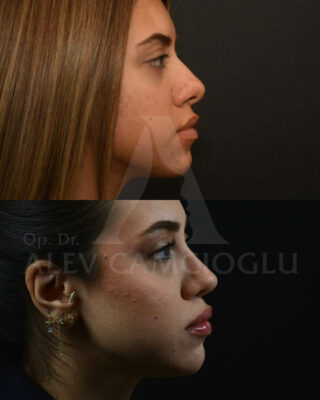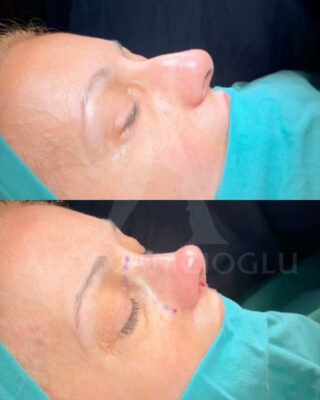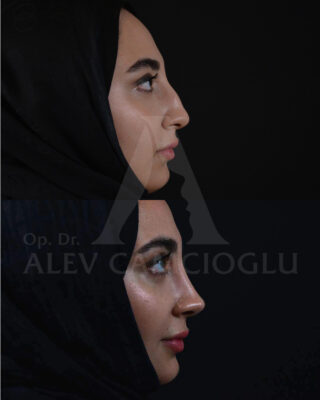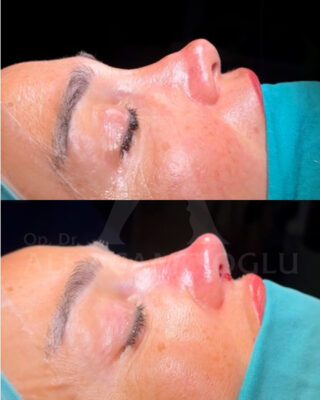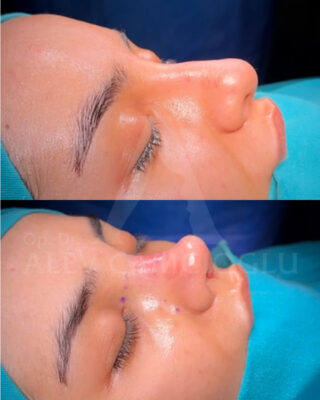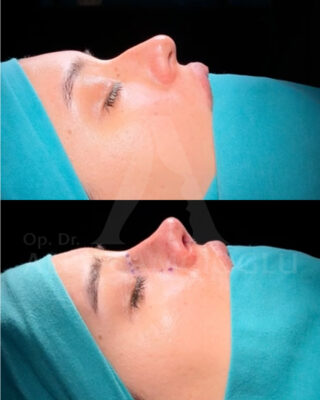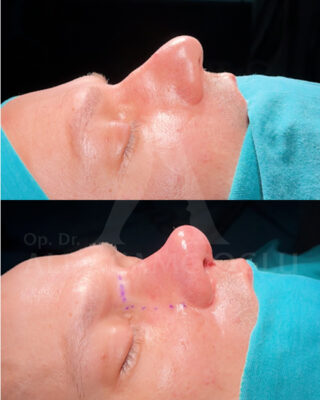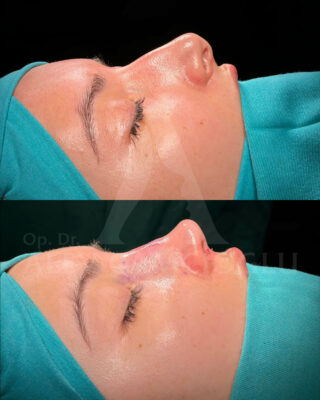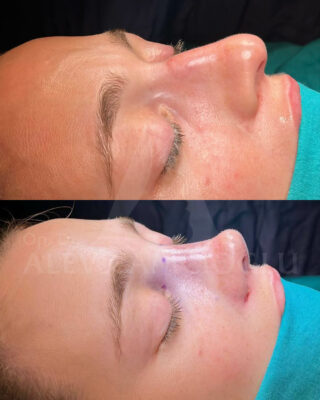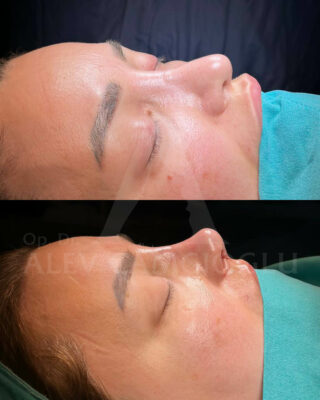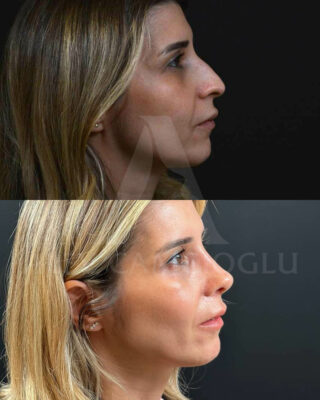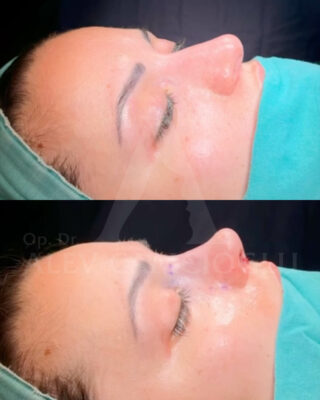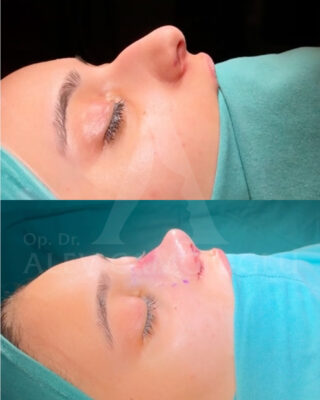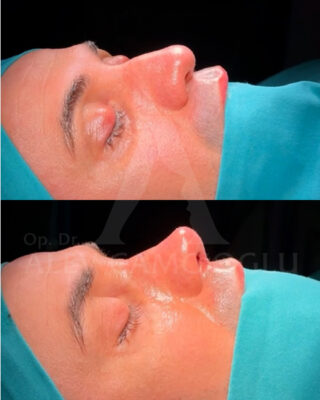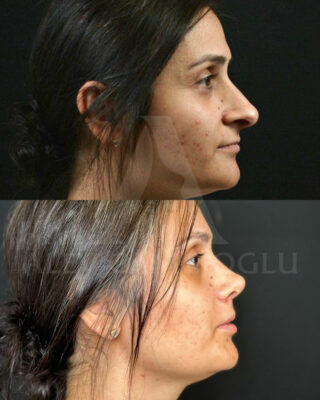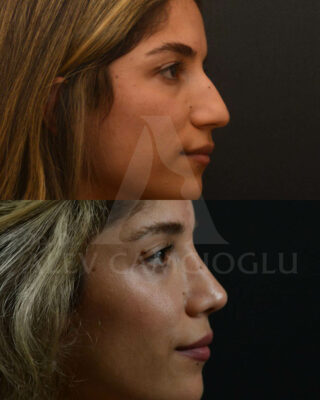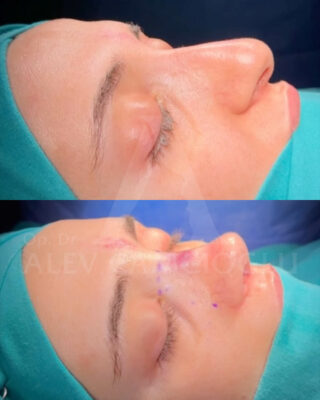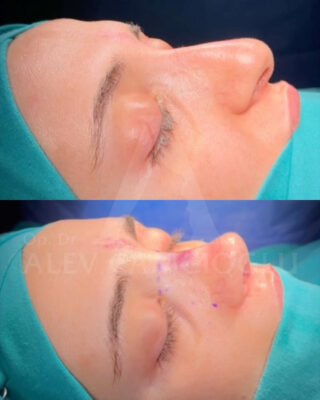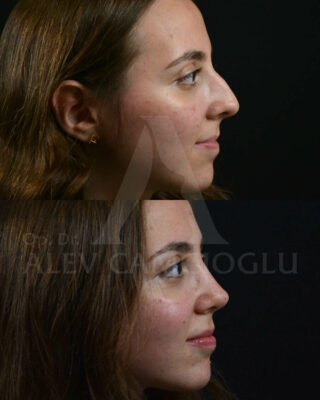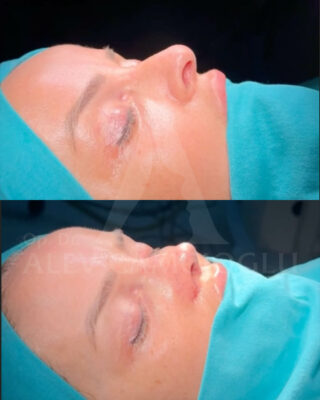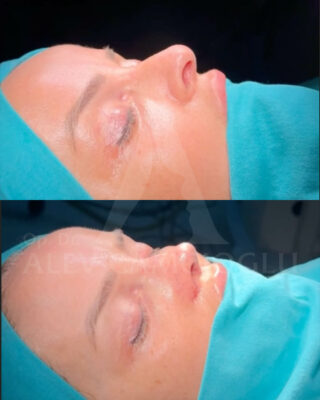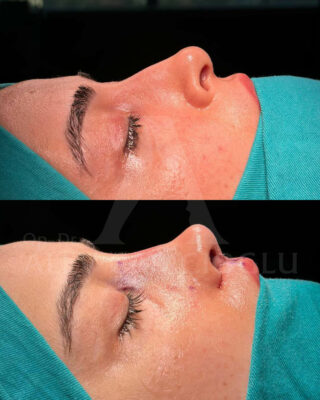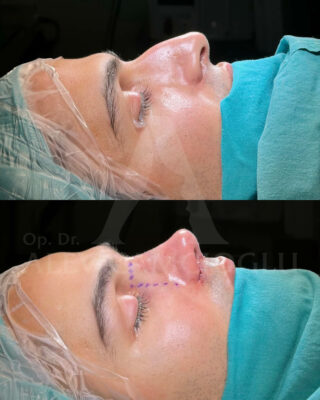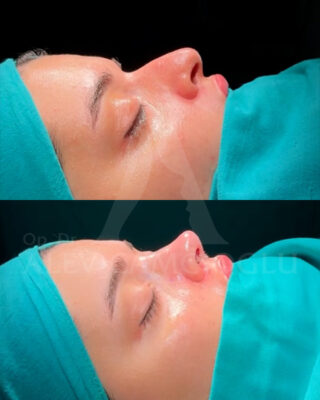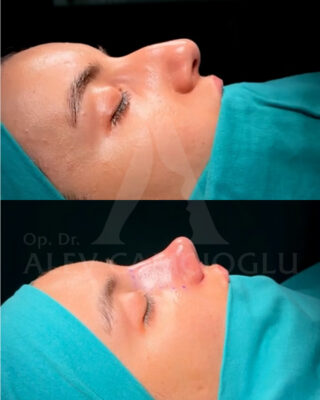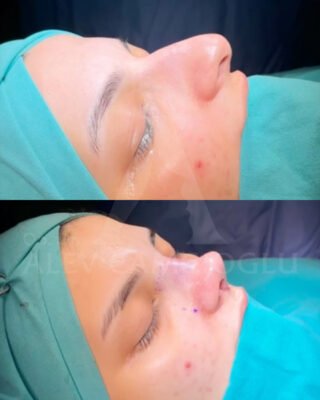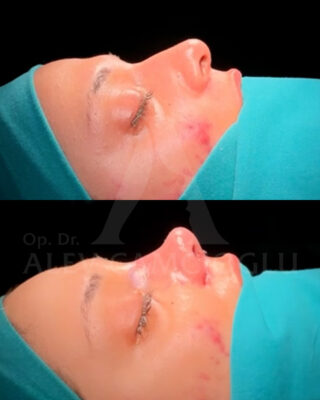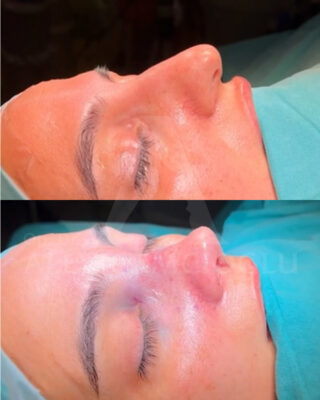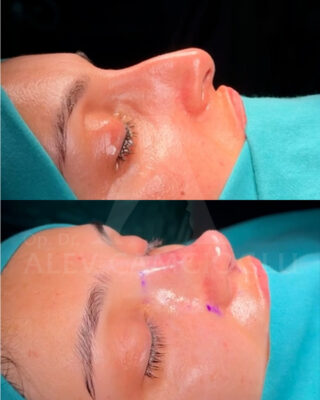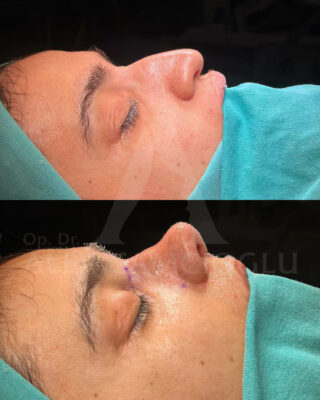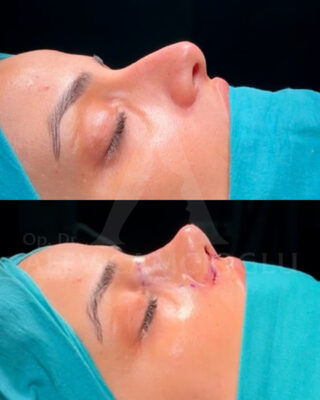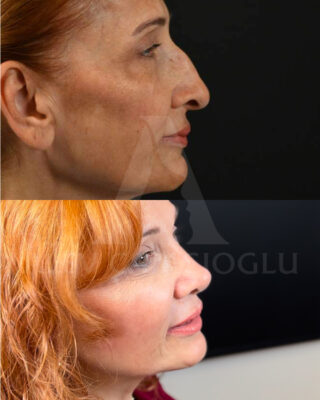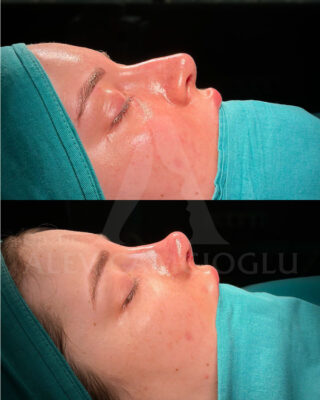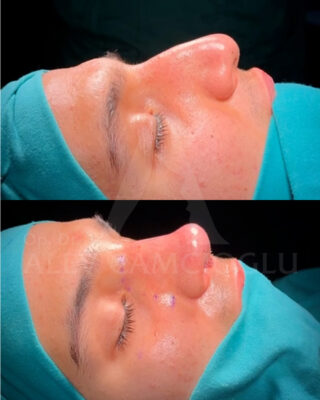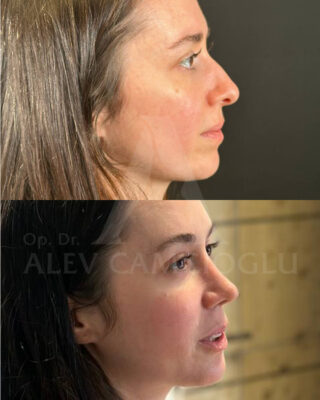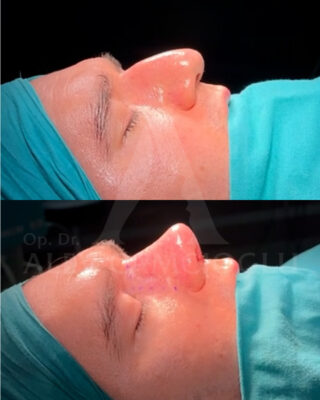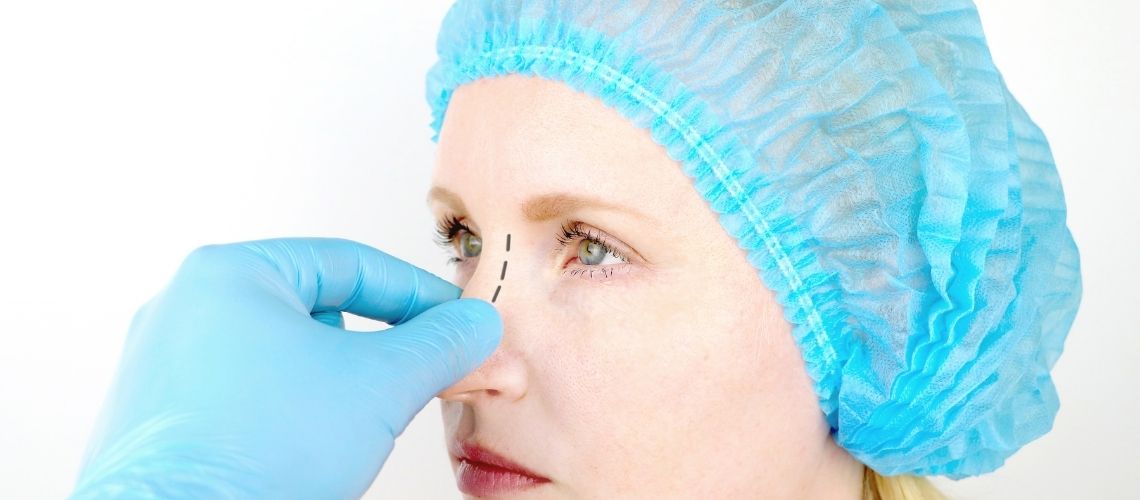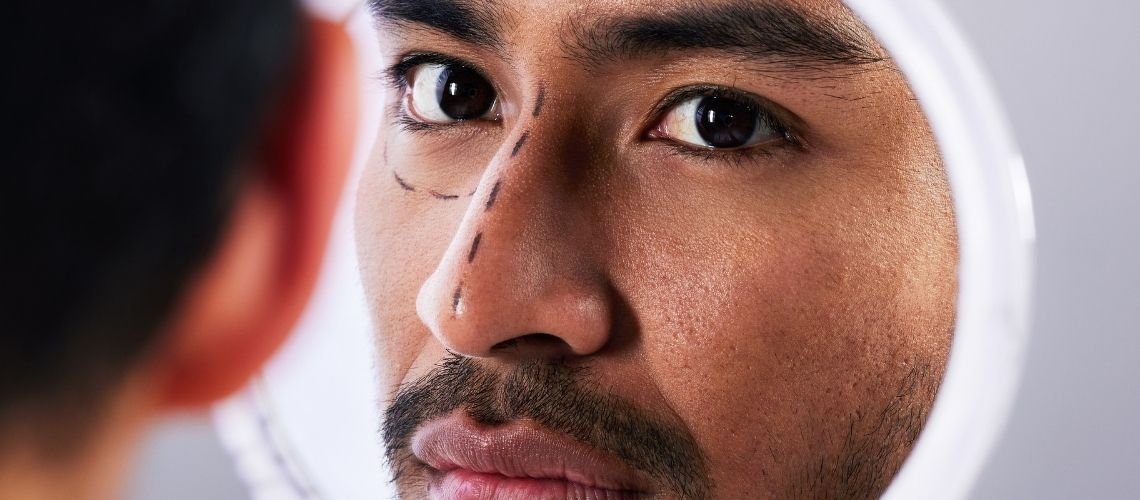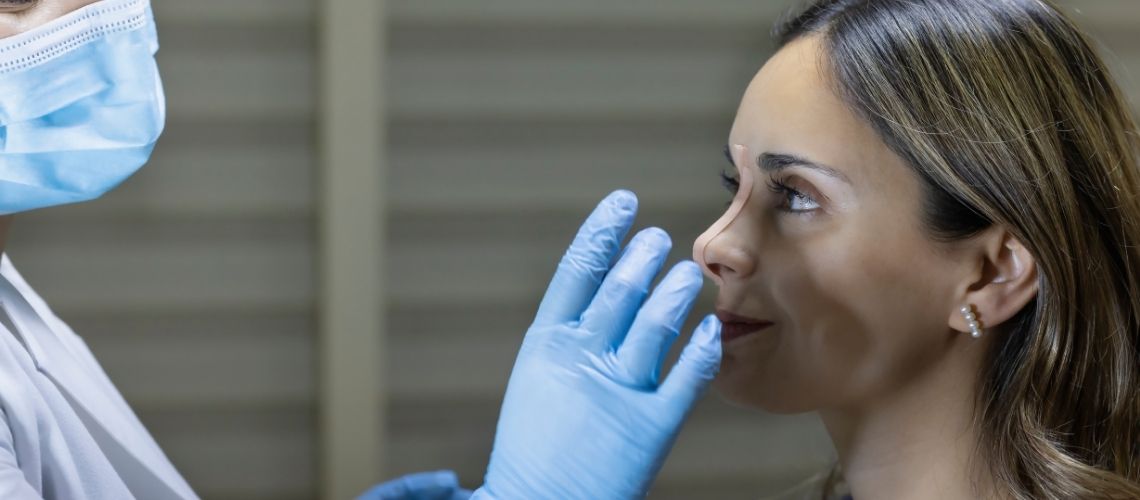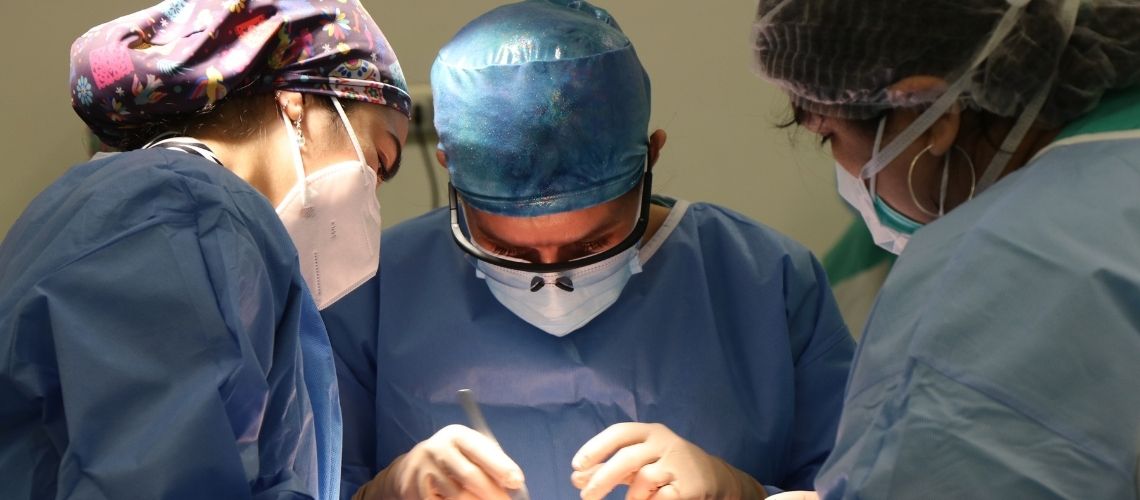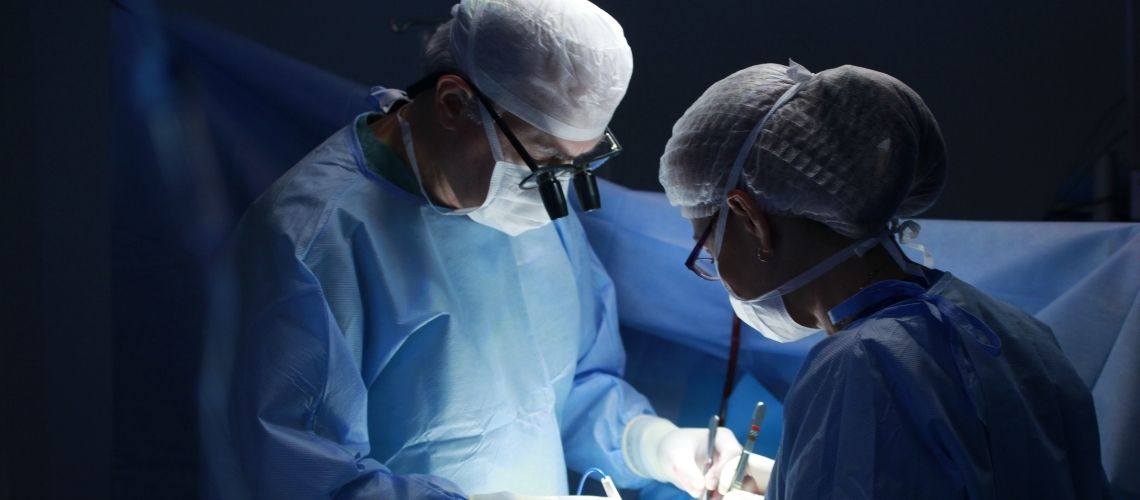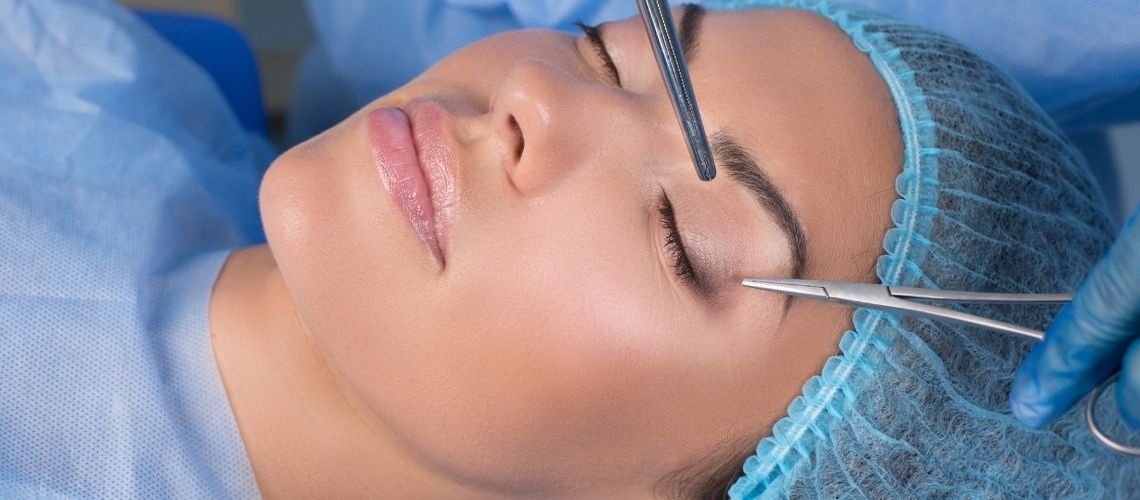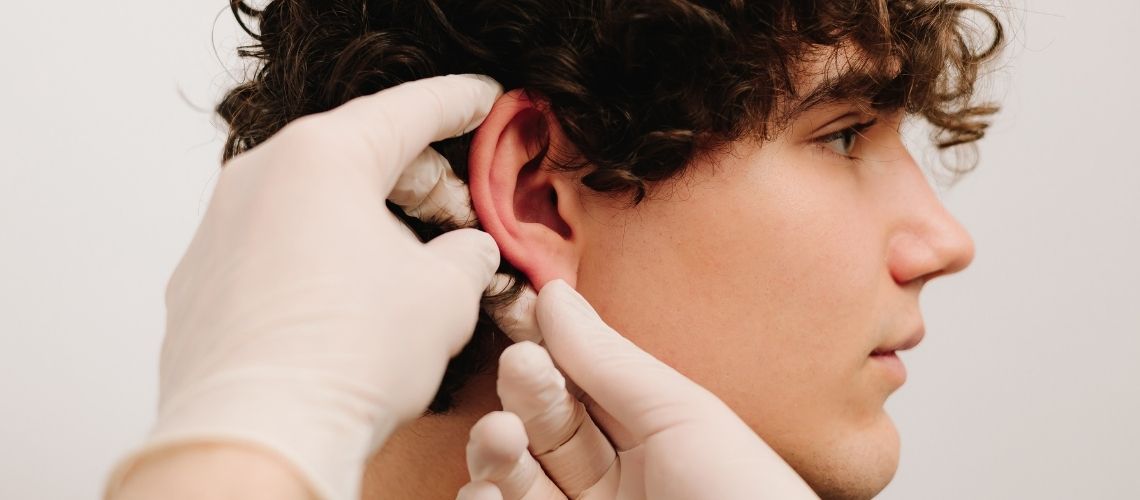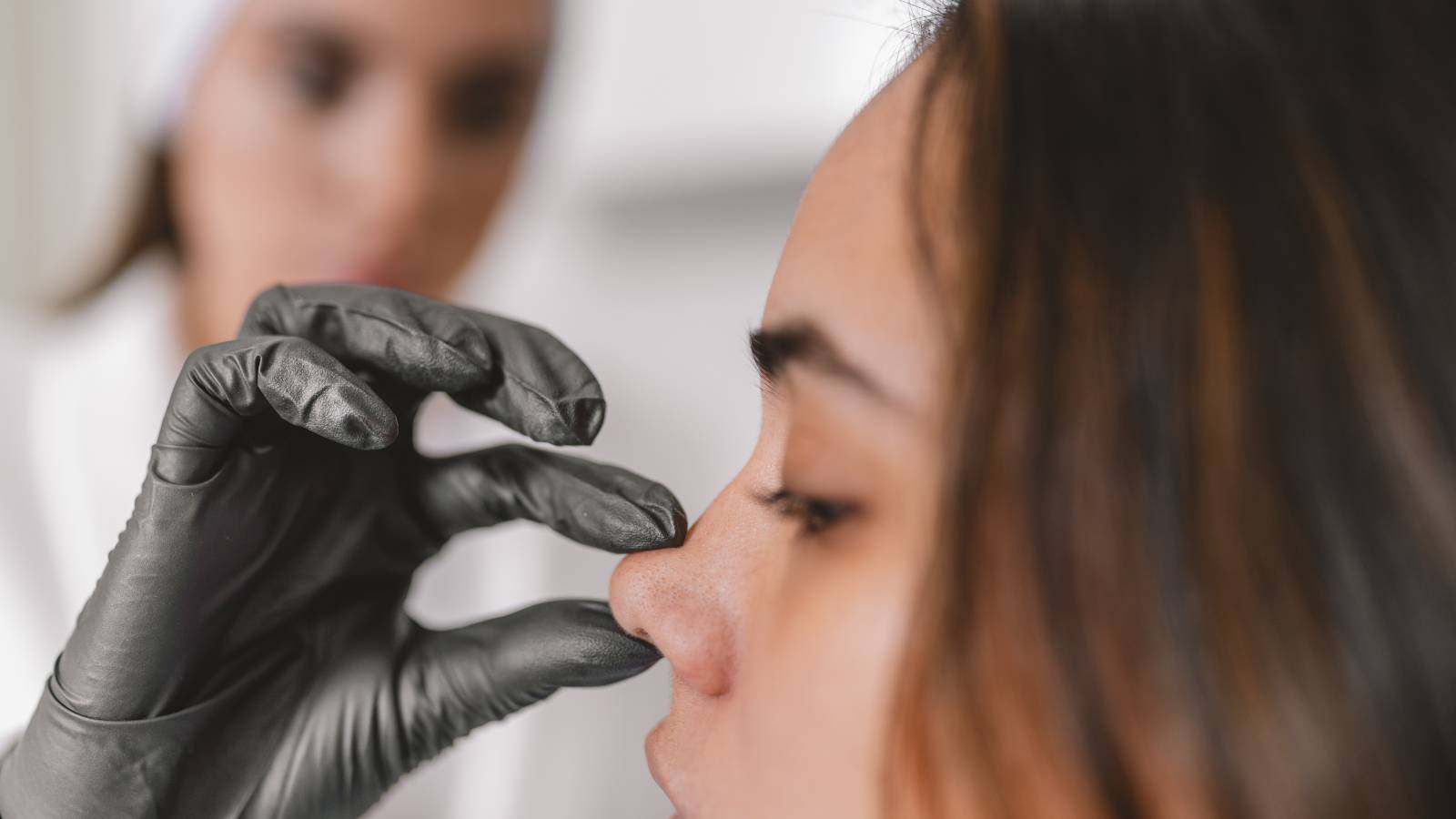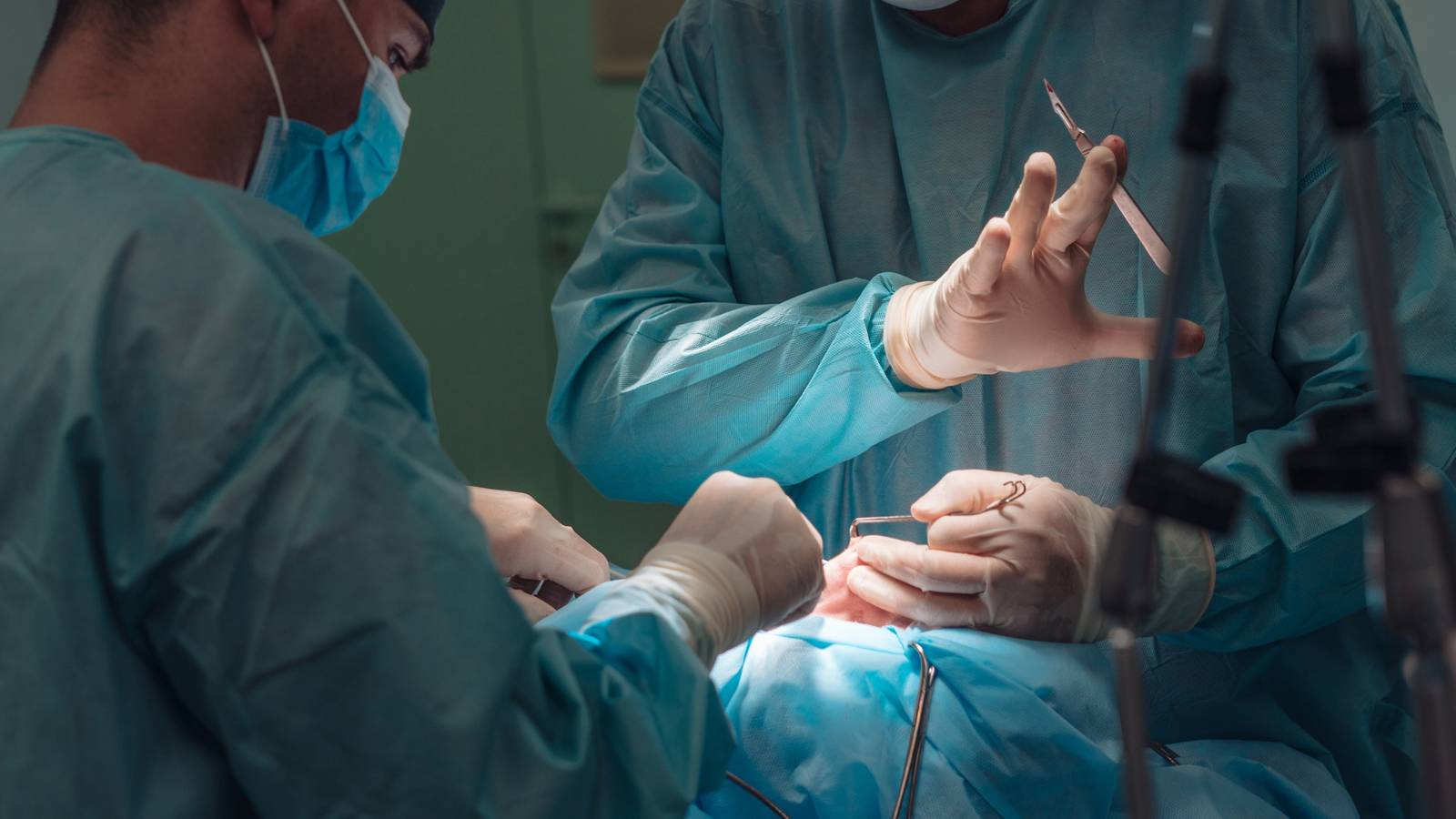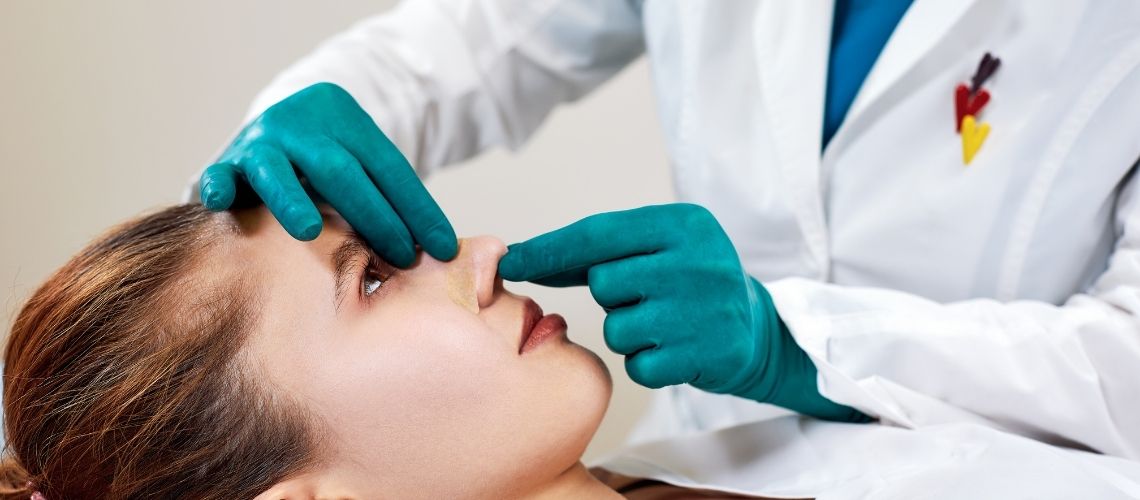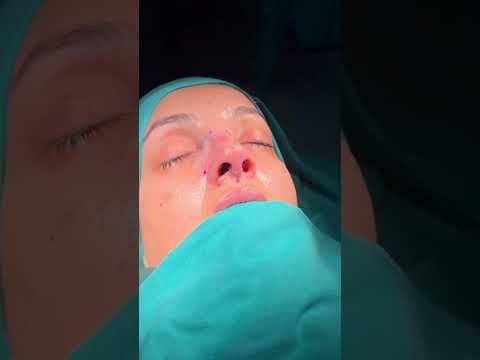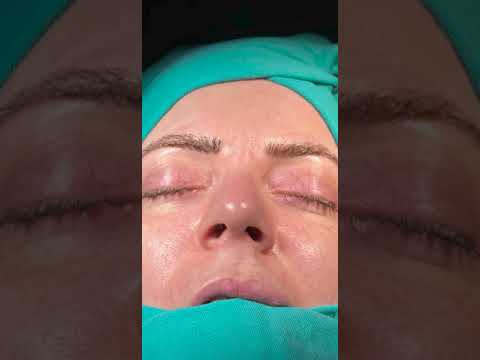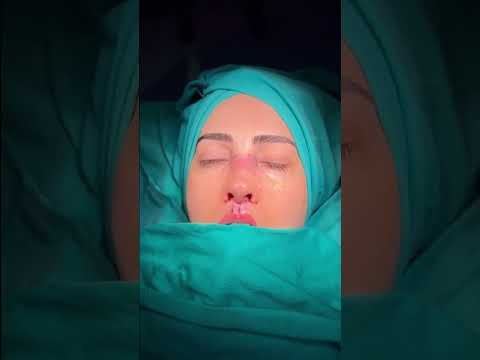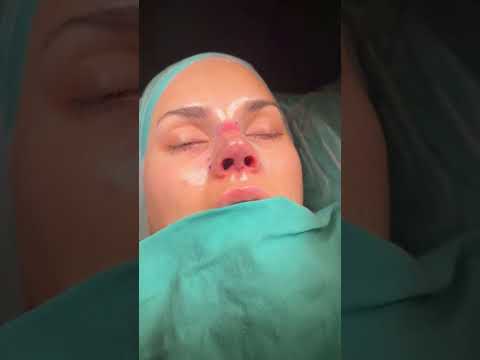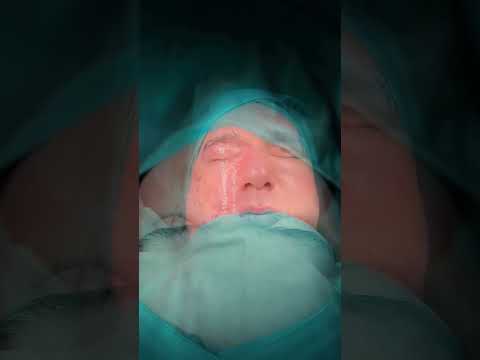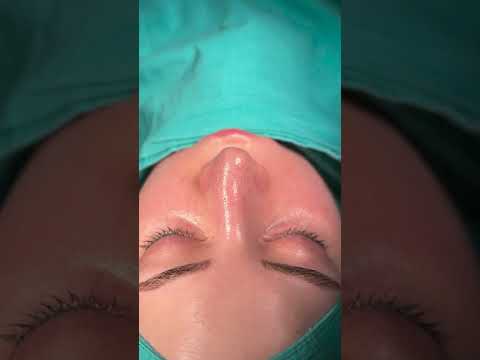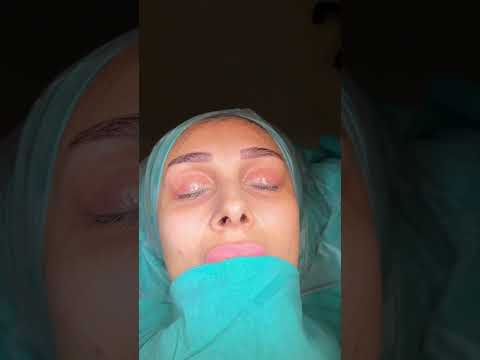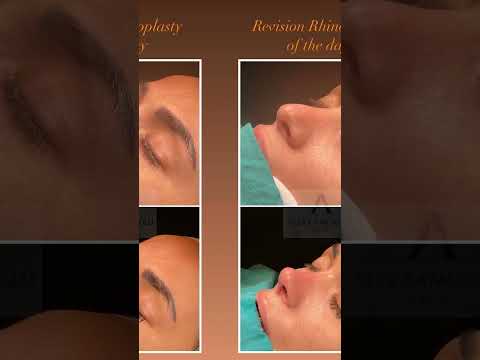Broken Nose (Fractured Nose) Surgery in Turkey
If you’ve suffered a nasal injury, our Broken Nose Surgery in Turkey provides prompt and effective treatment. Dr. Alev Camcıoğlu offers expert care to repair fractures, restore normal function, and improve the appearance of your nose. We prioritize your recovery and aim to return you to daily life with renewed confidence.
Cost of Broken Nose (Fractured Nose) Surgery in Istanbul, Turkey ranges between €5,000– €7,000 in 2025 depending on hospital, package, and anatomy of your nose. Check our prices, before & after photos, and patient results from the USA, UK, Canada, Australia, and the rest of the world.

What Are the Symptoms of a Broken Nose?
A broken nose usually occurs as a result of an external blow and manifests with some distinctive symptoms. These symptoms can be seen in most patients and play a significant role in diagnosis. The first symptom is often difficulty breathing, caused by the narrowing of the nasal passages, which negatively affects daily life. Additionally, pain and tenderness in the nasal area are common. The severity of the pain varies depending on the size and location of the fracture.
- Difficulty breathing
- Pain and tenderness
Bleeding, especially in the first few hours, is common after a broken nose. The bleeding is due to damaged blood vessels and can sometimes be severe. Swelling in the nasal area results from the impact causing tissue swelling and usually appears within the first few days. Bruising around the nose and surrounding area can also occur, caused by blood seeping into the tissues and usually becoming more noticeable within a few days.
- Bleeding
- Swelling
- Local bruising
If you observe one or more of these symptoms, it is recommended to consult a healthcare professional to understand the severity of the situation and determine the necessary treatment. Even if these symptoms appear alone or together, the possibility of a nasal fracture should not be ignored.
How Is a Nasal Fracture Diagnosed?
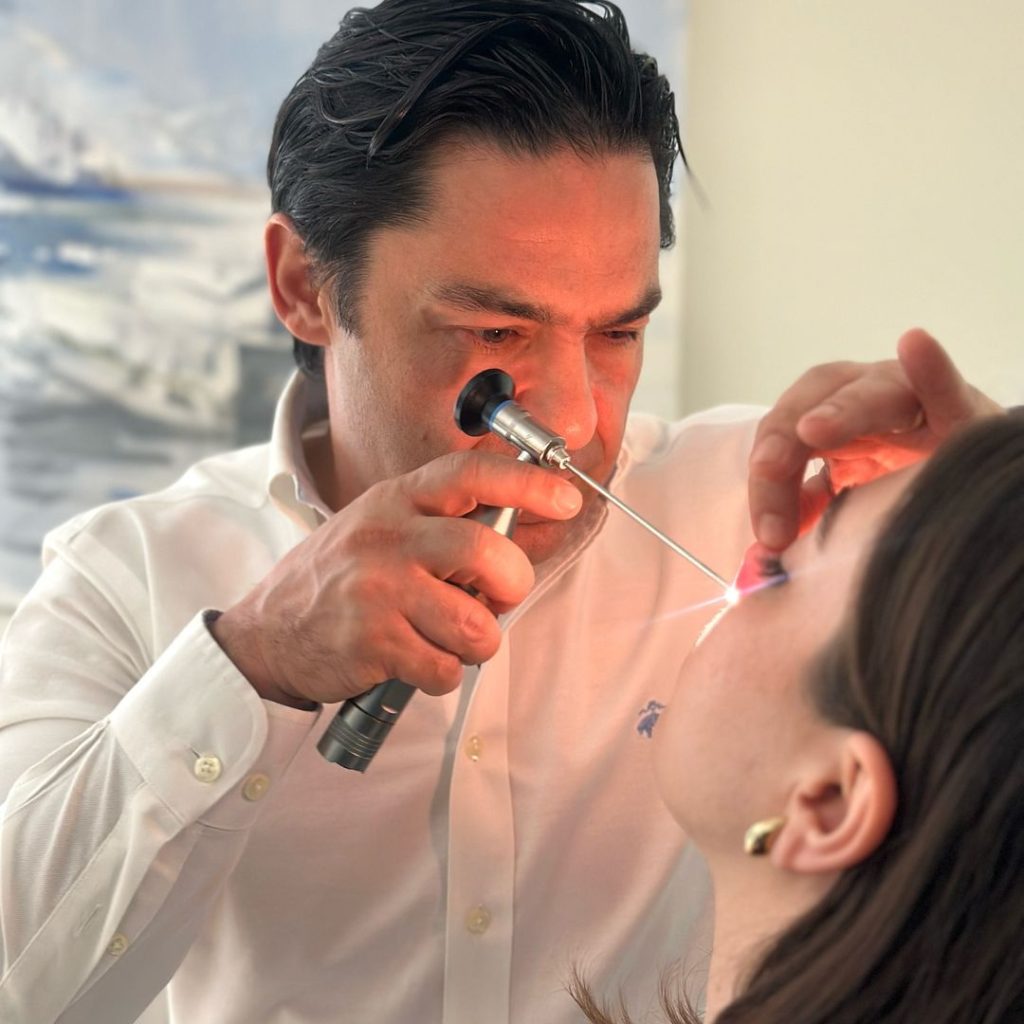
Diagnosing a nasal fracture involves several steps to determine the extent and type of damage. Initially, a healthcare professional will carefully examine the patient’s nasal structure to observe any deformities or abnormalities. The doctor will gently apply pressure around the bridge of the nose and surrounding areas to check for pain reactions and abnormalities.
During the examination:
- The doctor applies gentle pressure to the nasal bridge and surrounding areas.
- The nasal passages are examined in detail.
Local anesthetics may be used to increase the patient’s comfort during this physical examination. If the physical examination does not provide sufficient information, the doctor may request imaging tests. These tests are crucial for accurately identifying fractures in the nasal bone. Particularly in the following cases, more detailed imaging is required:
- Insufficient information from the physical examination.
- Suspicion of other potential injuries.
Imaging techniques typically include:
- X-ray: A simple and quick method, though it does not always yield clear results.
- Computed Tomography (CT) scan: Provides more detailed images and is more effective in identifying complex fractures.
What Are the Treatment Alternatives for a Broken Nose?
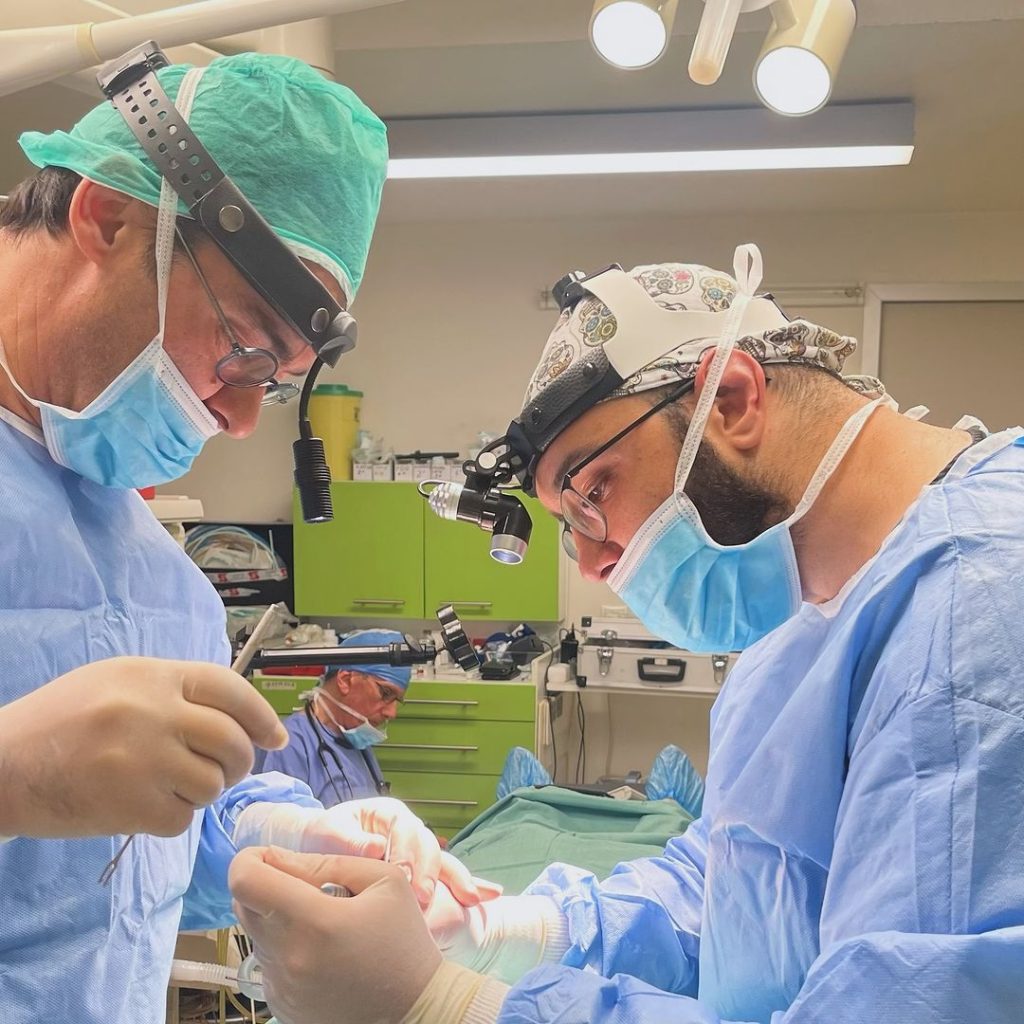
Treatment for a broken nose varies based on the severity of the injury and individual needs. Minor fractures often require minimal intervention, while more complex cases may require surgical procedures. First, let’s examine some general approaches used in the treatment of a broken nose:
Ice Application and Pain Relief:
- Ice packs are applied to the injured area within the first 48 hours.
- Pain relievers help control pain and swelling.
Manual Realignment:
- If the bones and cartilage of the broken nose are displaced, they can be manually realigned.
- This procedure is usually performed under local anesthesia and is recommended to be done within the first two weeks after the fracture.
Internal and External Splinting:
- After realigning the fracture, internal packing is done inside the nose, and an external splint is applied.
- Internal splints typically remain for a week, while external dressings may stay for two weeks.
Antibiotic Therapy:
- Antibiotics may be prescribed to prevent infections that could be caused by bacteria living in the nose.
Severe or complex fractures may require more intensive treatment. The surgical options offered for these cases include:
Nasal Hematoma Drainage:
- A hematoma in the septum may be drained to remove the blockage and prevent more serious complications.
Reconstructive Surgery:
- Multiple fractures or untreated old fractures involve realigning the bones and, if necessary, reshaping the nasal structure.
- Usually performed under general anesthesia.
Septoplasty:
- If there are structural disorders in the nasal septum, septoplasty may be applied.
- This procedure corrects the septum to keep the airways open and improve breathing functions.
- Rhinoplasty may be preferred to give the nose an aesthetic appearance.
- During this operation, bone and cartilage are removed, the infrastructure is reshaped, or repositioned.
6 Reasons to Get Broken Nose (Fractured Nose) Surgery in Istanbul






Post-OP
Care
Broken Nose (Fractured Nose) Surgery Before & After Photos in Turkey
What Should Be Done After Broken Nose Surgery?
Postoperative care for a broken nose requires careful attention. Following these steps helps speed up healing and minimize the risk of complications:
- General discomfort and pain are expected in the first few days. Applying cold compresses can help with swelling and bruising around the nose.
- Follow the specific instructions given by your specialist regarding splints or packing. This is critical for the proper healing of the nasal structure.
- Sleeping with a high pillow keeps the head elevated and can reduce swelling.
Hygiene and rest:
- Hygiene and cleanliness are very important during the healing process. Follow the nasal hygiene routine recommended by your specialist.
- Rest well and avoid strenuous activities. When you need to be active, make gentle movements.
Diet and medications:
- A healthy diet supports the body during the healing process. Include plenty of fruits, vegetables, and protein in your diet.
- Adequate water intake enhances the body’s healing capacity.
- Take the medications prescribed by your doctor on time. These may include pain relievers, antibiotics, or nasal sprays.
Environmental factors:
- Protect yourself from external factors like cold wind and dust, which can irritate the sensitive nasal tissue.
- Avoid exposure to sunlight and use sunscreen.
Habits and environmental protection:
- Avoid smoking and alcohol consumption. These substances can slow the healing process and increase the risk of infection.
- Regular medical follow-up ensures that your healing process progresses successfully. Attend follow-up appointments scheduled with your doctor.
What Is Rhinoplasty?
Rhinoplasty plays an important role in facial aesthetics and is a widely performed surgical procedure worldwide. Over 200,000 rhinoplasty surgeries are performed annually in the United States, making it the third most popular cosmetic surgery. Initially described by John Roe in 1887, this surgery has undergone significant changes both technically and philosophically over time. While early procedures focused more on reduction, today’s approach emphasizes proportional and functional improvements. These changes are based on the development of surgical techniques and a better understanding of anatomical structures.
The main techniques used in rhinoplasty surgeries include:
- Reduction
- Grafting
- Reshaping
Contributions from specific surgeons are crucial in defining many techniques and approaches still used today. Rhinoplasty is considered one of the most complex procedures in plastic surgery due to technical challenges. The nose’s central position on the face directly affects aesthetic value through proportions and symmetry. It requires a customized approach based on each patient’s anatomical structure and facial features.
The technical challenges of rhinoplasty include:
- Understanding anatomical variations
- Differences in the thickness of soft tissue envelopes
- Choosing among a wide variety of techniques
Rhinoplasty is not only for aesthetic correction but also important for preserving or improving nasal functions. Addressing obstructive processes that hinder airflow increases the complexity of the surgery. This may require altering internal nasal structures.
The success of the surgery largely depends on proper patient selection, comprehensive preoperative analysis, and careful planning. These steps are critical to improving rhinoplasty outcomes and minimizing potential secondary procedures. Therefore, rhinoplasty requires not only surgical skill and technical knowledge but also a detailed assessment and approach tailored to each patient.
What Is Septoplasty?
Nasal septoplasty is a surgical procedure to correct septal deviation within the nose. Septal deviation is the bending of the nasal septum, often leading to airway obstruction. The surgery is performed to remove this obstruction and make it easier for the patient to breathe. During the procedure, the doctor corrects the crooked septum to optimize airflow within the nose.
Septoplasty can be performed using various surgical techniques, including:
- Endonasal procedures: Interventions made through the nostrils.
- Endoscopic procedures: More detailed procedures performed with the help of a thin tube and camera.
- Open procedures: Methods preferred in cases requiring broader access.
Septoplasty can also be combined with other nasal surgeries. These combinations may include:
- Rhinoplasty: Aesthetic nasal reshaping procedure.
- Turbinoplasty: Procedure to reduce the size of the turbinates within the nose.
- Functional endoscopic sinus surgery: A procedure to address sinus problems.
The postoperative recovery process usually takes a few weeks, and serious complications are rare. Proper patient selection is crucial for achieving a successful outcome. To ensure effective recovery and good results, patients must strictly adhere to the doctor’s recommendations before and after surgery.
What Complications Can Arise During Rhinoplasty?
Various complications can occur during and after rhinoplasty. These include hemorrhagic, infectious, traumatic, functional, and aesthetic issues. Each type of complication can affect the patient’s recovery process and results in different ways.
Hemorrhagic complications are usually seen in the postoperative period:
- Epistaxis: The most common type of bleeding after rhinoplasty. It is usually mild and can be treated with elevation, nasal decongestants, and compression.
- Septal Hematoma: This early complication can lead to serious problems. Rapid intervention is required, and anterior packing is typically placed after drainage.
- Tranexamic acid: This medication, used to reduce bleeding, is administered intravenously preoperatively.
Infectious complications can vary in severity during the postoperative period:
- Cellulitis: An early complication after rhinoplasty that usually responds well to cephalosporins.
- Septal abscesses: May result from untreated hematoma and require surgical drainage.
Traumatic complications generally occur during surgery:
- Septal deformities: Result from L-strut damage and usually appear as a late complication.
- Intracranial injuries: Rare but serious situations requiring significant treatment and intervention.
- Lacrimal duct injuries: May occur during osteotomies and sometimes require intubation.
Functional complications can affect breathing capacity postoperatively:
- Septal Perforation: Occurs due to damage to the mucoperichondrial flaps and needs to be prevented or repaired.
- Rhinitis: Usually a temporary condition that can improve with decongestion.
Aesthetic complications affect the patient’s appearance and can manifest in various ways:
- Graft-related asymmetries: Occur in the tip area depending on factors like skin thickness and the amount of graft used.
- Dorsal area complications: Result from improper cartilage resection and usually require necessary corrections at least one year after surgery.
What Problems Can Be Encountered After Septoplasty?
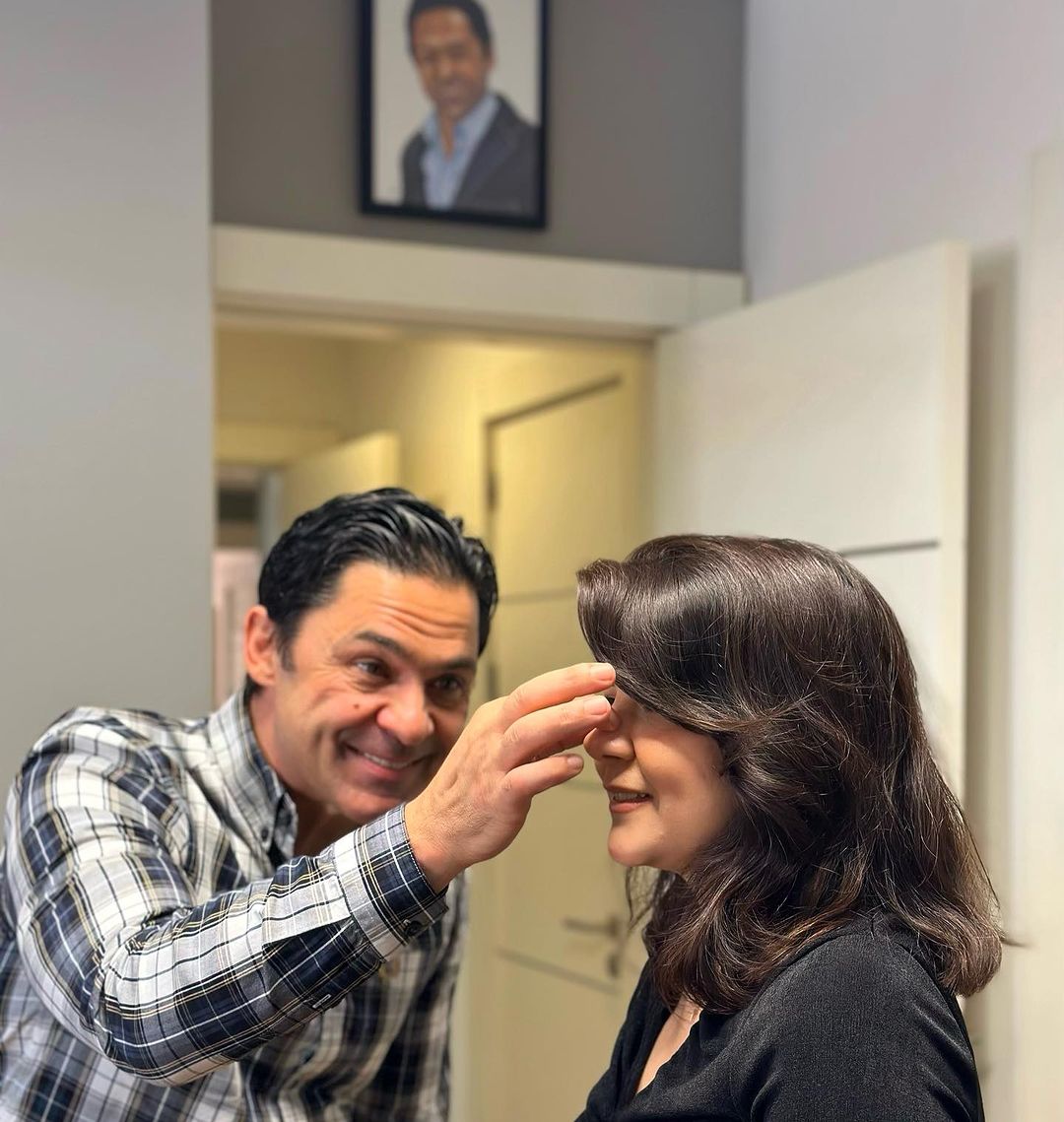
Some complications after septoplasty can affect the patient’s recovery process. The most common problem encountered is excessive bleeding. Small leaks are considered normal, but more serious bleeding may require nasal packing. In severe cases, cauterization may be necessary.
- Septal hematoma: Caused by bleeding under the mucoperichondrium and requires rapid intervention.
- Perforations: Occur due to injuries to opposing mucosal surfaces.
- Infections: Rare but can be treated with oral antibiotics.
- Hyposmia: Reported especially in operations performed with turbinoplasty.
- Intranasal adhesions: Prevented by using silastic splints.
- Nazopalatin nerve sensitivity: Temporary sensory loss due to manipulations on the nerve during surgery.
Additionally, in the long term, there may be a lack of expected improvement in nasal breathing. This condition can develop due to various factors, including errors in surgical technique. Patients must be informed about these potential problems in advance, which is crucial for managing the process.
How Much Does a Broken Nose (Fractured Nose) Surgery in Turkey in 2025 ?
The cost of a Broken Nose (Fractured Nose) Surgery in Istanbul, Turkey, typically ranges between €5,000 and €7,000. The price can vary depending on several factors, such as the surgeon's experience, the complexity of the procedure, the clinic's reputation, and additional services included in the package.
| Average Broken Nose (Fractured Nose) Surgery Cost (in Euros) in 2025 | |
| United Kingdom | €16,600 – €19,000 |
| United States | €14,200 – €23,400 |
| Canada | €16,000 – €19,000 |
| Australia | €23,800 – €37,800 |
| South Korea | €9,400 – €17,200 |
| Ireland | €13,000 – €15,000 |
| Germany | €11,000 – €13,000 |
| Netherlands | €11,000 – €13,000 |
| France | €11,000 – €13,000 |
| Turkey | €5,000– €7,000 |
Frequently Asked Questions
Broken nose surgery carries some risks. For example, mild to moderate bleeding may occur after surgery. Rarely, these bleeds may become uncontrollable and lead to serious complications. Additionally, there is a risk of infection after the operation, which may require antibiotic treatment. Furthermore, breathing difficulties may occur after surgery, and these problems may require medication or additional surgical procedures.
Broken nose surgery is usually performed using closed reduction or rhinoplasty methods. The closed reduction procedure involves inserting cotton swabs into the nostrils and applying a cast or plastic splint on the nose to correct the broken bones or cartilage. Rhinoplasty, on the other hand, is a more comprehensive approach; the doctor opens the nasal skin and repairs, cuts, or changes the broken structures. Both procedures can be performed within the first 10 days after trauma and are chosen based on the patient’s condition.
Aesthetic surgery for a broken nose is not always necessary, but it may be recommended in some cases. If the displacement and deformity caused by the fracture are not corrected, the patient’s facial symmetry may be affected. Therefore, surgical intervention may be required to preserve aesthetic appearance and prevent functional problems. Particularly if the cartilage tissue is damaged and this negatively impacts nasal functions, aesthetic intervention is advisable. The decision is made after the patient’s condition is evaluated by a doctor.
Broken nose surgery typically takes about an hour. However, this duration can vary depending on the severity of the fracture and the surgical techniques used. Possible complications can also affect the length of the surgery. Therefore, the duration can vary for each patient. In more complex cases, the surgery may take longer.
Broken nose surgery is performed free of charge in state hospitals when medically necessary. However, nose surgeries for aesthetic purposes are usually performed in private hospitals and may be subject to fees. Therefore, if the surgery is planned solely to improve appearance, the costs must be borne by the patient. However, if the surgery is medically necessary, it can be performed free of charge with state support.
If a broken nose is not treated, several health problems can arise. Firstly, breathing difficulties may occur because the deformities in the nasal structure obstruct airflow. Additionally, the risk of infection increases, which can lead to sinusitis. Chronic sinusitis can cause headaches. In the long term, untreated nasal fractures can result in more serious complications such as sleep apnea. These conditions lower the overall quality of life and worsen health issues over time.
Yes, a broken nose bruises. When the nasal bone or cartilage is damaged in a nasal fracture, bruising is common. The bleeding that occurs after a nasal fracture causes blood to accumulate under the skin, leading to bruising. Swelling often accompanies bruising, making it more noticeable around the tissues surrounding the nose. Therefore, bruising is a common symptom in individuals with a broken nose.
A broken nose can return to its original state with proper treatment and care. However, the healing process is long and arduous. Surgical intervention is usually required and should be performed by a specialist. After treatment, the nasal bones are supported and stabilized with tampons. Careful attention to care during the healing process is essential. As a result, with proper treatment and care, the nasal bones can return to their original state and function. However, it is important to remember that the healing process is a long and meticulous period.
The treatment for a broken nose depends on the severity of the fracture. Mild nasal fractures typically heal on their own. However, severe nasal fractures require medical intervention. Mild fractures may not require special treatment for self-healing. However, if the shape and functionality of the nose are significantly affected, professional intervention is necessary. Even with mild fractures, careful attention is needed to speed up the healing process and prevent complications.
The appropriate age for nasal fracture surgery is determined by the completion of the nasal structures’ development. Generally, this age is around 18 for girls and around 20 for boys. However, the timing of surgery may vary depending on individual development. In cases of severe injury, surgical intervention may be necessary regardless of age. Thus, doctors ensure proper healing of the bone structures by intervening at the right time.
Certain symptoms are observed to determine if the nose is broken. Swelling, edema, and bruising in the soft tissues can indicate a nasal fracture, but they are not definitive signs. Pain and difficulty breathing may indicate problems within the nose. The most certain sign of a nasal fracture is feeling the nasal bones move with your hand. When these symptoms are observed, it is important to immediately consult a healthcare professional.
The post-surgery process for a broken nose varies from person to person, but it generally takes between 1 to 2 weeks. During the first few days after surgery, swelling, bruising, and mild pain around the nose are common. These symptoms gradually decrease and usually improve within a week. The first 24 hours are critical and require close monitoring in the hospital. Keeping the head elevated during the first week helps reduce edema. Swelling and bruising around the nose may be noticeable during this period but will diminish over time.
One of the Best Clinic Team for Broken Nose (Fractured Nose) Surgery in Turkey
Dr. Alev Camcıoğlu is considered to be one of the best Broken Nose (Fractured Nose) Surgery surgeon in Turkey. You can check Broken Nose (Fractured Nose) Surgery reviews here.
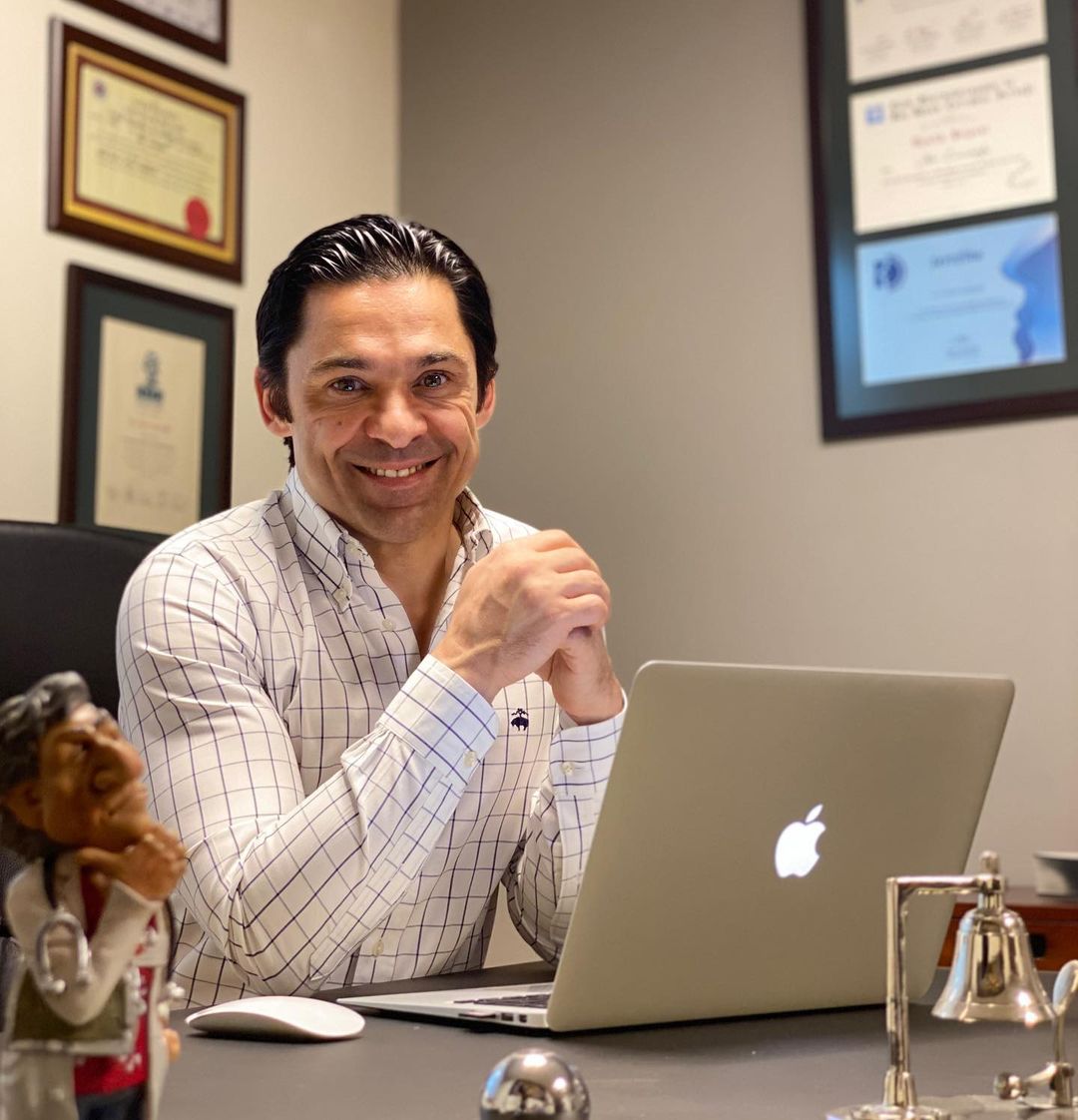
Op. Dr. Alev Camcıoğlu
Rhinoplasty Surgeon

Aylin Uyuşmak
Clinical Coordinator

Serra Sevgili
Clinical Assistant

Sema Yapıcı
Operating Room Nurse





